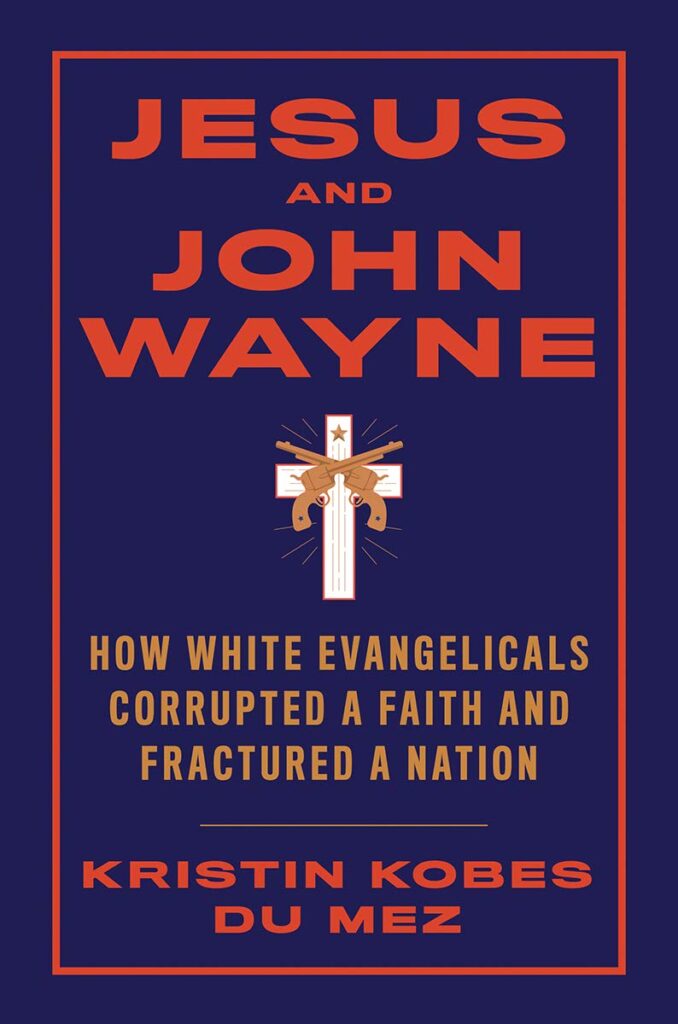
Associate Professor of American Religious History, Alison Greene, teaches a course called “History of Christianity in America.” In her course, she assigns a cultural analysis project through the lens of Jesus and John Wayne: How White Evangelicals Corrupted a Faith and Fractured a Nation by Kristen Kobes Du Mez.
In this text, Du Mez provides a history of 20th century gender and evangelicalism. Students are asked to choose a “contemporary cultural item” – aligning with or resisting this framework by Du Mez.
What does this look like?
In a 750-1000 word essay, Dr. Greene invites her students to engage with Du Mez and follow her framework as they provide an analysis of their contemporary cultural item – “an object, a film, a meme – the sky’s the limit.”
Contemporary Cultural Item Rubric:
- Begin with an introductory overview of your argument about the religious and gendered meaning or implications of your chosen cultural item, building on Du Mez’s history of white evangelicalism and gender in the 20th century.
- Summarize Du Mez’s argument about religion and gender in white evangelicalism, and then focus in particular on the aspects of it relevant to your own topic.
- Offer a description of the cultural item you have chosen. Describe how it engages themes of religion and gender.
- Describe the meaning, nature, purpose, and/or audience of your chosen cultural item (as relevant):
- What is its origin? Who created it? What is its history?
- Where is it located? Who will see/hear/experience it?
- For whom is the cultural item intended? What messages does it communicate?
- Read your cultural item alongside Du Mez:
- How does the item embody or challenge Du Mez’s argument about white evangelicalism and gender?
- How does Du Mez’s analysis illuminate the item’s history, meaning, and/or audience?
In this assignment, students are encouraged to think about the real-world implications of the “History of Christianity in America” course and to ground these implications in conversation with Du Mez. What is excellent about this essay is that it provides a means of assessing student comprehension as well as their ability to apply the content in meaningful ways.
If you would like to learn more about Dr. Greene’s work or how to begin to use more creative assessments in your course, please reach out to the Office of Digital Learning at candlerdigitallearning [at] emory [dot] edu.
